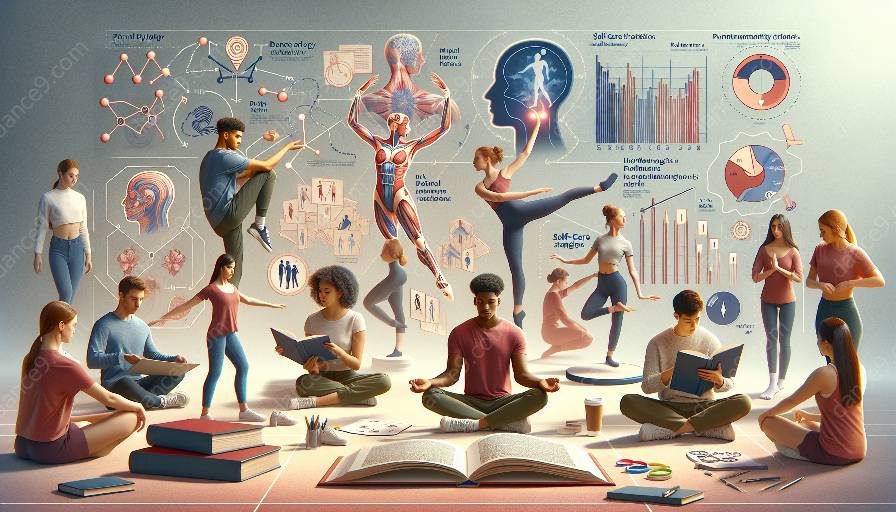Dance is a physically demanding art form that requires both physical and mental stamina. It's crucial for dancers to prioritize their physical and mental health by incorporating effective warm-up and cool-down routines into their practice. In this comprehensive guide, we'll explore the importance of warm-up and cool-down in dance and provide practical self-care strategies to support dancers' well-being.
The Importance of Warm-Up in Dance
Warm-up is a crucial part of a dancer's routine, as it prepares the body for the demands of dance. The primary goals of a warm-up are to increase blood flow to the muscles, improve flexibility, and reduce the risk of injury. A well-executed warm-up also helps dancers mentally prepare for their performance, allowing them to focus and connect with their bodies.
Components of an Effective Warm-Up
An effective warm-up routine for dancers should incorporate a combination of cardiovascular exercises, dynamic stretches, and specific movements related to the style of dance. Cardiovascular exercises like jogging or jumping jacks can elevate the heart rate and increase circulation, preparing the body for physical activity. Dynamic stretches, such as leg swings and arm circles, help improve flexibility and range of motion, reducing the likelihood of muscle strain or injury. Additionally, specific movements and exercises that mimic the choreography or movements of the dance routine can mentally and physically prepare dancers for their performance.
Self-Care Strategies for Dancers
Beyond physical preparation, dancers should also prioritize self-care strategies to maintain their mental and emotional well-being. Practices such as meditation, mindfulness, and breathing exercises can help alleviate performance anxiety and stress. Taking time for self-reflection and setting realistic goals can also contribute to a dancer's overall mental health. It's important for dancers to listen to their bodies and recognize the importance of rest and recovery.
The Role of Cool-Down in Dance
Just as a warm-up is essential, a proper cool-down routine is equally important for dancers. Cool-down exercises aid in muscle recovery, reduce muscle soreness, and promote flexibility, helping to prevent injury and improve overall performance. A well-structured cool-down also allows the body to gradually return to its resting state, lowering the heart rate and promoting relaxation.
Effective Cool-Down Techniques
An effective cool-down routine for dancers should include gentle, static stretches that target the major muscle groups used during the dance practice. Holding each stretch for a minimum of 30 seconds allows the muscles to relax and elongate, improving flexibility and reducing tension. Incorporating breathing exercises and relaxation techniques during the cool-down can further enhance the mind-body connection and promote mental well-being.
Integrating Physical and Mental Health in Dance
Ultimately, the integration of physical and mental health in dance is essential for long-term success and well-being. Dancers should prioritize a holistic approach to their practice, encompassing self-care, warm-up, and cool-down routines to support their overall health. By nurturing both their physical and mental well-being, dancers can enhance their performance, prevent injuries, and sustain their passion for dance.


































